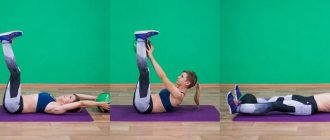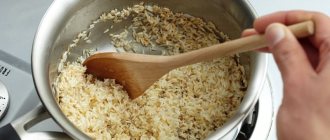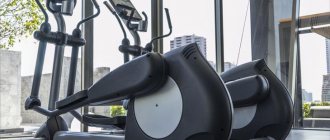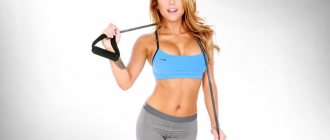Anyone can run
And it is true. However, it is important to know the right running intensity that is right for you and will be beneficial for your health.
But everyone understands intensity differently, and choosing the right amount of training is not easy. Before you start running, you need to undergo two key medical examinations that will allow you to understand the capabilities and reserves of your specific body. And then, based on these data, build the intensity of running training.
When determining the intensity of running, it is important to look at the capabilities of the musculoskeletal system, cardiovascular and respiratory systems of the body. All this can be determined using biomechanical and functional diagnostics.
The benefits and effects of running on the body
While running, our body gets used to consuming less oxygen. And this is very useful for us. A large amount of oxygen for the body is poison. The body burns out quickly. When a person runs a lot, the amount of oxygen consumed is reduced, and thus we extend our life.
If we regularly run, our capillary network gradually, over the course of two to four years, begins to grow, blood supply improves, and then the functioning of all muscles and internal organs.
When jogging, qualitative changes occur in the musculoskeletal system. Cartilage and bone tissue become more prepared for stress, and muscles become more adapted to physical activity. All this prolongs the good condition of the whole body, which will subsequently make it possible to feel healthy and vigorous after 70, 80 and even 90 years.
An important and, probably, one of the main points in the list of beneficial properties of running for amateurs is anti-stress therapy. When jogging at the right intensity, excess adrenaline and cortisol are burned in the body. This is important in order not to overload the cardiovascular system. For city dwellers, low-intensity running is the path to a healthy, comfortable and long life.
Subscribe to “Marathon Man” on Telegram. Announcements of articles and useful selections every week.
There are also benefits from running in relation to metabolic processes in the body. They increase and are activated, which leads to positive adaptive changes in the body, including the burning of excess fat deposits.
If we talk about blood pressure, a number of studies have been conducted that have proven that low-intensity running training normalizes blood pressure and is indicated for both hypertensive and hypotensive patients. But it is important to understand that intense (interval, tempo) training and participation in competitions lead to an increase in blood pressure, an increase in the tone of blood vessels, respectively, that is, before you start running in high pulse zones, you need to equalize the pressure so as not to create a threat to your heart rate. -vascular system at the time of peak loads.
The benefits of running for women
Jogging brings great benefits, but only if all recommendations are followed. First of all, the woman notices visual changes - fat deposits disappear, weight normalizes. Running affects your psychological state - your mood improves and you feel more energetic. The main thing to remember is that the load should correspond to your general health.
It is important! When is it better to run - in the morning or in the evening? There is no clear answer. Both morning and evening runs have pros and cons. It is important to focus on your individual daily routine and general well-being.
Getting rid of cellulite and fat deposits
What are the benefits of running in the morning for women? First of all, the ability to quickly transform your figure. The process of losing weight occurs due to the normalization of metabolic processes and the active burning of fat deposits.
Running workouts:
- restore metabolism;
- help you lose excess weight more effectively;
- increase endurance;
- strengthen muscles.
Strengthening all body systems
Regular jogging has a positive effect on many internal systems and organs of a person:
- heart function is normalized;
- muscle tissue is strengthened;
- increased activity and performance;
- the immune system is strengthened;
- the acid-base balance is normalized.
Thus, it maintains body tone.
It is important! Experts note the positive impact of running on the human psyche. Exercise increases the body's resistance to stress.
Vivacity and attractiveness for the whole day
It is running training that allows you to maintain your body in constant tone. This is due to the following factors:
- general condition improves;
- the psyche is strengthened;
- the body constantly experiences moderate stress, and as a result, it works more efficiently.
Production of the hormone of happiness
Any running workout is the basis for combating depression and stress. Moderate physical activity has a positive effect on the body:
- neutralize tension;
- improve mood;
- normalize hormonal levels, as a result, the hormone of happiness is produced.
Of course, running develops self-discipline and willpower. When you run, you will feel real changes:
- you will become calmer;
- you will have a sense of purpose;
- your character will become more strong-willed.
This is due to the fact that running requires some work on yourself.
Diagnostics is everything
Why is it important to conduct a diagnosis before starting running? Because we must identify our weakest point. According to the law of the weakest link in the chain, the maximum strength of the chain is equal to the maximum strength of the weakest link. The same can be said about the capabilities of our body. Our running intensity, which will be harmless to health, should be at the level of our weakest link in the body.
The weak link can be both in the musculoskeletal system and in the cardiovascular system. And, based on the diagnostic data, we build the running intensity. By the way, with the help of a properly selected running load, you can not only maintain your health, but also strengthen your weak links.
If it is not possible to contact a professional sports doctor and use special equipment for diagnosis, it will be enough to visit a therapist before starting classes and undergo a medical examination, which includes detailed blood tests and a visit to a cardiologist.
Why is running so good for human health?
As a type of physical activity, running is unique both in its naturalness - we have been running since childhood - and in its biomechanics, since it involves a large number of muscles, ligaments and joints. Only swimming and skiing can compete with him in this. But if for running, sneakers and desire are enough, with swimming, and even more so skiing, not everything is so simple.
- Running improves lung function, increasing the efficiency of gas exchange, and also strengthens the cardiovascular system. Thanks to this, all tissues of the body receive oxygen, and toxins are removed from the body.
- Aerobic exercise stimulates the human immune system, increasing the body's resistance to bacteria and viruses, and also helping to fight malignant cells that have appeared in it.
- In addition, it has been proven that jogging has a positive effect on the activity of the nervous system, brain function, and also helps in the prevention and treatment of depression.
- There are also studies that show that employees who run are more productive and efficient on running days compared to their non-runners. In addition, thanks to the synthesis of endorphins, serotonin, dopamine and endocannabinoids, runners are more satisfied with life and have a better mood than non-runners.
- Running helps burn fat reserves and normalize body weight, and the runner's figure becomes more attractive. For the buttocks, thighs, torso and face - running is the most inexpensive and accessible cosmetic procedure.
- And finally, it has been proven that runners have a 25-40% lower risk of dying prematurely from various diseases and, on average, live 3 years longer.
Three criteria for healthy running
Evgeny Kadlubinsky also recommends taking into account three main criteria by which you can determine your body’s readiness for running.
You can talk while running
If you can speak calmly while running without shortness of breath, then most likely you have chosen a safe pace for yourself. You are running in heart rate zone 1 or 2. And these are safe areas for long-term work.
You can breathe through your nose while running
If you are running and your breathing is even, you can breathe through your nose - this is another signal that your pace is safe for your health.
You ran the distance and nothing hurts you
This also means that you have received the optimal running load. If these three criteria are met and you feel good, then your running pace is relatively correct.
If you have already successfully run for a long time, this does not mean that you do not need to control your body. It is very dangerous to overtrain here, and then running will not benefit your health.
Is it good to run? The benefits and harms of running
+ Horror story I found... https://pokolenie-x.com/?p=4451 How I earned and survived my first heart attack. The story of a former athlete. “How this happened to me.
My first heart attack hit me when I turned 48 years old. 6 days before these sad events, I received a prize for winning the competition for athletes over 40 years old. At the same time, I played volleyball well, ran 8 kilometers in the park three or four times a week in the morning. I could easily do chin-ups on the horizontal bar up to 12 times and squat 10 times and stand up like a pistol on each leg. In a word, I had quite decent physical fitness.
2 weeks before this fateful day, without much effort, I lifted a fairly large bag of cabbage onto my shoulders, and for the first time I felt in my chest some kind of aching feeling that was unfamiliar to me, which probably couldn’t even be called pain. But without attaching the slightest importance to this, and deciding that I simply turned unsuccessfully and simply “pinched” some nerve endings. A few days later, while trying to catch up with a bus approaching a stop, I experienced the same unpleasant sensation. And again, I didn’t say anything to anyone, feeling completely healthy.
And then one day, after work, tired, late in the evening I wanted to saw a metal corner for a gymnastics wall at the dacha with a hacksaw. It was an autumn evening, it was October outside and it was cloudy. My hands were frozen from the cold iron, and in order to warm up, I began sawing more intensely. Immediately, a pinching feeling began to grow in my chest, and weakness spread throughout my body. “All I needed was to feel limp in front of all the neighbors!” - I mentally said to myself, picking up the heavy workpieces and running to the second floor. I collapsed right in the hallway, writhing from unbearable pain squeezing my chest. The ambulance has arrived. Using intensive measures, the doctors literally “pulled me out” from the other world.
“Yes, you provoked a heart attack on yourself,” said the doctor who examined me, “... and you could have done without it. Your heart is trained, not weak. How could you drive yourself like that! »
In the hospital, where I stayed for more than 3 months (the heart attack happened again), and during this time I became more educated, though probably not in the field of medicine, but rather received a “heart attack” education. All my life I will remember my savior Diana Andreevna Zenkovich. She saw patients as her allies in the fight against this disease. Entering the ward where there were three of us with heart disease, she constantly gave us lectures, short and popular, and most importantly, accessible to comprehension.
She said something like this:
The heart is a bag of muscles. This tireless mechanism performs enormous volumes of work, distilling several tons of blood in 24 hours. The heart itself is never enriched with blood, which passes through it, like through a pump. The heart muscle is supplied with oxygen from the outside, through a large number of blood vessels approaching it from the outside. Can you imagine this mechanism?
And that’s when it malfunctions, due to the fact that some part of the vessels feeding it is affected by sclerosis and does not allow a sufficient amount of blood to pass through. A piece of heart muscle, now deprived of nutrition, dies.
Yes, but all the other neighboring muscles of the heart remained functional! And then, with powerful contractions, they literally tear apart the area that has become dead. It’s not for nothing that in the old days, a heart attack was called a heart attack. Man is already between life and death.
So, needless to say, if at that moment he makes any physical effort (for example, runs up the stairs), then there is practically no chance left to save him!
Cardiologists will probably smile with irony after reading this primitive diagram (also in my presentation). But it was precisely this clear understanding of the mechanism of a heart attack that not only saved my life, but also allowed me to live and work actively for more than ten years. (I was strongly advised to apply for disability and even quit my job.)
My 42-year-old friend recently died. I think that he killed himself, the same as if he had put a loaded pistol to his head! Here's how it all happened.
Diagram of myocardial infarction (2) in the anterior wall after occlusion of the left coronary artery
While traveling to a competition in one of the small towns, he suddenly felt a strange weakness throughout his body, “Well? Most likely, he said to himself. “So that I, an athlete who constantly plays football with his peers, veterans, would allow myself to lie in bed because of a nonsense malaise!” Nonsense! I just need to warm up well...” But those around him noticed his sallow complexion and clearly unhealthy appearance. With great difficulty, he was barely persuaded to see a doctor.
The doctor immediately discovered ominous signs: “Young man, you are in a pre-infarction state.” He was immediately admitted to a local hospital. They strictly forbade him to get out of bed, and to make it safer, they took away his slippers. After lying down for half a day and resting a little, he felt completely healthy. My friend disdainfully refused the offered “duck” and went barefoot to the toilet. They carried him out of the toilet on a stretcher. And now not the ward, but straight... to the morgue.
I can imagine so clearly everything that happened to him, although I was not there because I myself experienced exactly the same thing. After I fell in the hallway, the ambulance did everything necessary. After several injections, which dilated my blood vessels and improved blood supply to the heart muscle, I immediately regained consciousness. During this time, while they carefully carried me into the car and then drove me around the city, the pain completely subsided. I felt the usual strength in my muscles. I self-confidently declared to the doctor on duty who registered me that I, an athlete, did not and could never have a heart attack. I apologized for disturbing him and got ready to go home straight away.
The doctor looked at me in amazement and ironically noted that at three o’clock in the morning I was unlikely to get home, barefoot, in a tracksuit...” Let’s wait until the morning...” In the morning I felt completely healthy. And despite the fact that I was clearly told: “You are having a heart attack,” I doubted the competence of the doctors - since I felt great!
It didn’t work out with the “duck” either, and I also went to the toilet in my neighbor’s slippers. Fate took pity on me: I returned to the ward on my own, but after that I felt the same feeling in my chest that I experienced yesterday in the yard. Thank God, it happened in the hospital, and in the cardiology department. I pressed the red alarm button. Doctors came running and took urgent measures to prevent a new heart attack that was already beginning.
So because of these “arts” (until I wised up) I lay on my back for three whole months, instead of one, and even after the hospital I spent three months recovering at home. What to do if this happens » You can finish reading if you’re not scared :)…
How to avoid overtraining?
How does overtraining happen? A person, unnoticed by himself, rejoicing that running is easy, begins to increase the load each time.
How to understand that something has already gone wrong? The nervous system sends a signal first. What's happening:
– Sleep disturbance: difficulty falling asleep, interrupted sleep. This condition is also accompanied by mild excitability.
- Loss of appetite: I don’t feel like eating. Or vice versa – a constant desire to eat something.
- Resting heart rate is above 75 beats per minute.
- Aching local pain in the joints (knee or foot) after a short run.
- Abnormal blood pressure – above or below normal.
If you find these symptoms in yourself, then rest for 3-4 days. All symptoms have passed and you can return to running. The symptoms have not disappeared - you need to go to a specialist.
If you are concerned about your heart rate after a run, then it is better to contact a sports cardiologist, because they have different criteria for assessing the state of the cardiovascular system of runners than a regular doctor. Often alarming indicators of heart function for a person who does not lead an active lifestyle are the norm for an athlete and are not dangerous to health.
For those athletes who can visit a professional sports clinic and see specialists, it is recommended that once a year they do a comprehensive diagnosis of the functioning of the entire body, especially the cardiovascular system. There are such centers in Moscow and St. Petersburg.
How to warm up before running and why
Unheated muscles, which have been little used all day (and if you exercise in the morning, they were relaxed after the night), are not able to immediately take on a large load. Not getting enough exercise is a leading cause of injury. This approach can be called harmful, since you can get:
- tendon rupture, sprain;
- a rolled foot due to weak ankles;
- back pain, neck pain.
During the warm-up, the temperature rises, synovial fluid begins to be produced, which literally lubricates the muscle mass and all joints. All ligaments become more elastic. The heart rate also gradually increases so that a sudden start does not shock the heart. You are literally preparing every part of your body.
The set of exercises gives the following effects:
- psychological mood;
- breathing is normalized;
- coordination of movements is strengthened - especially important when jogging in the morning;
- blood flow accelerates, the heart muscle works faster, blood vessels dilate - the risk of heart attack and stroke when running becomes significantly less;
- the nervous system gets used to the loads, realizing that they are healthy, and if you rush from the start at full speed, you will get stress;
- metabolism starts - starting from the first step you will spend extra calories;
- the possibility of ligament injury is reduced.
Overall, the training becomes more effective. To show some exercises, let's watch a video on the topic:
Celebration or struggle?
If you have found out that running is not contraindicated for you, and now you want running to be beneficial, you need to decide on the strategy for your runs: running as a holiday or running as a struggle.
Depending on your attitude and training simulation, your body will produce different hormones that will affect your health differently.
A sports culture is now actively being formed in Russia. Everyone wants to run harder and faster, attend every race in the area and endlessly update their personal best. If you constantly go out to train in such an intense mode, running ceases to be beneficial to health. Instead of the desired endorphin, we will tire our body more and more, producing cortisol (stress hormone). And then sport, instead of a holiday, will become sheer stress and struggle for us. This model of the training process is traumatic and demotivating.
When choosing one running strategy or another, it is important to remember proper recovery. Never try on the training of experienced athletes!
Professional athletes train, rest, eat and then train again. And amateurs train, wanting to run a half marathon in 1 hour 30 minutes or a “ten” marathon in 35 minutes, while still going to work and doing household chores, which means they cannot receive full recovery a priori. Thus, they drive their body into terrible conditions of chronic fatigue.
A positive running model is about proper recovery.
For running to be beneficial, stress must be measured. High-quality recovery is mandatory: sleep at least 8 hours.
The benefits of running for men and women
https://www.accorhotels.com/0778
The main benefits of jogging are the same for both men and women. However, there are a number of features that need to be noted for each gender separately.
So, for women, the benefits of running are as follows:
- First of all, this is a wonderful opportunity to lose weight.
- In addition, running will help you gain beautiful relief and pump up your buttocks and thighs.
- There are also beneficial effects on the skin. As you know, its smoothness and elasticity is determined by the level of oxygen saturation. When running, blood circulation accelerates, which makes it possible to improve the synthesis of collagen and elastin, which are responsible for the elasticity of the skin. In addition, running is great at combating the hated orange peel.
- Jogging helps maintain a good mood, prevents stress and helps fight emotional swings, mood, anxiety, and insomnia, which are common to many women.
And now a few words about the properties for men:
- Strengthening endurance, training strength of character.
- The opportunity to tighten muscles and gain beautiful relief.
- Fat burning.
- Running has a beneficial effect on joints. Many men perform strength training exercises with heavy weights, which poses a certain risk to joints and ligaments. Running helps neutralize possible negative consequences by gently strengthening joints, increasing their elasticity and reducing the risk of injury.
- This type of activity may also be beneficial for potency. A sedentary lifestyle provokes stagnant processes in the genital area, which provokes an earlier decline in potency. Running helps increase testosterone levels, helps circulate blood throughout the body, and increases a man's sexual stamina.
In addition, running teaches a man to be disciplined and collected, helps him achieve his goals and realize his plans. And these are very important qualities for representatives of the stronger sex.
Running and losing weight
Run to lose weight, or lose weight and then run?
Dr. Kadlubinsky is for an integrated approach and against specific diets. The number of calories consumed should be less than those that a person will spend. In other words: eat less and move more. Also, the key to successful weight loss while maintaining caloric intake is good sleep.
Healthy sleep is from 21-22 pm to 6 am.
If a person is overweight, then Nordic walking and slow jogging will help you lose weight. During this time, you will lose weight, strengthen your musculoskeletal system, and then you can move on to more intense running training.
How to make the most of running
To maximize the health benefits of running, you need to follow certain rules:
- Place and time to run. A stadium or park is best for training. Walking dogs is usually prohibited in such areas, and cars are not driven there, so the air is kept fresh and clean to maximize the benefits of running. If there are no parks or stadiums nearby, it is recommended to choose quiet streets or alleys where there is no heavy traffic. It is recommended to run in the morning, before breakfast, or in the evenings - it is at this time that the body is most prepared for physical activity.
- Warm up. Before you start jogging, you need to warm up and stretch thoroughly. Bends and turns of the torso, squats, lunges will increase blood circulation in the muscles and help prevent sprains. In addition, during the warm-up process, joint lubricant is released, which protects the joints from damage.
- Running technique. The feet must be positioned correctly to prevent unnecessary stress on the hips, knees and spine. When lowering, it is better to place your leg evenly on the entire foot. The torso should be kept with a slight tilt forward, and it is not recommended to swing it while running. It is recommended to avoid sudden jumps up and hard descents to the surface. The arms should be bent at the elbows, their movement should be free, in time with the steps. Some runners prefer not to move their arms at all - here you need to be guided by your own feelings and choose the arm movements that seem most comfortable.
- Breath. While running, you need to breathe through both your nose and mouth. If your breathing becomes difficult and you have to “swallow” most of the air through your mouth, it means that the load is too high and you need to slow down.
- Pulse. It is equally important to control your heart rate. It is recommended to get a simple heart rate monitor and make sure that your heart rate while running does not exceed 100-100 beats per minute. If its frequency has increased, it is necessary to reduce it until the pulse stabilizes.
- Duration and frequency of training. Don't immediately expose yourself to grueling stress. An untrained person should start with 10-15 minutes a day and gradually increase the intensity and duration of training. Beginner runners are recommended to use an interval running technique, in which several minutes of running alternate with several minutes of walking. If you experience discomfort or pain, you need to slow down or stop exercising completely.
- Shoes and clothing. To maximize the benefits of running, you need to take care of the right clothes and shoes. They should be comfortable and not squeeze the body anywhere. The best shoes for running are sports sneakers with special shock-absorbing pads.
- Nutrition. It is not advisable to eat food an hour before running training. As a last resort, you can eat a banana, apple or other fruit. After finishing classes, you need to wait at least an hour before eating. Before running you should not drink liquid, and immediately after training it is advisable to drink a glass of clean water. This will allow the body's water balance to return to normal.
Before you start running, you should consult your doctor. This is especially important for people suffering from any chronic diseases. For some illnesses, jogging is contraindicated. These include: acute forms of infectious diseases, diseases or injuries of the musculoskeletal system, severe damage to blood vessels and the heart.
Previous article: An athletic figure and a lot of vitality - the benefits of running for men (and women!) Next article: Running for weight loss: how to run to lose weight?
Running Equipment
Today there is a lot of different equipment whose advertising promises us safe and comfortable running. But should you rely only on fashionable sneakers? Evgeniy Kadlubinsky is sure that sneakers alone will not do. The main work should be done by the runner himself: strengthen the muscles, the musculoskeletal system, and control the running technique.
But when it comes to body thermoregulation, equipment is important here, and it can be used successfully. Today, there are professional clothing that will help your body feel comfortable while running.
But in any case, you shouldn’t rely only on equipment, but approach the issue of clothing for training carefully.
Contraindications and possible harm
Despite all the benefits of running, running is not for everyone. Initially, it should be noted that running is contraindicated for obese people. They often start active jogging in weather to get a slim figure, and if they have a lot of excess weight (from 130 kg) and lack of preparation, this type of activity puts a huge load on the spine and knees, which can provoke negative consequences. In this case, it is recommended to start with slow walking and proper nutrition. When a certain part of the excess weight has already gone away, you can increase the load and start gradually running.
In addition, it is not recommended to run during pregnancy , especially if the embryo is attached to the lower part of the uterus. It is especially important to avoid active jogging in late pregnancy. During lactation, jogging is allowed, but it is important to properly fix the breasts so that during active movements they do not provoke discomfort. People over 60 also need to run carefully. This issue is resolved individually in each individual case. It may be more advisable to choose other exercises: Nordic walking, yoga, Pilates, and so on.
There are also absolute contraindications to running, including colds and chronic diseases. In this case, it is better to postpone training until better times. If you have joint or heart diseases, first consult with a specialist, and he will determine the potential benefits and harms of running for you.
If you want to lose weight, it is recommended to run slowly but for a long time, over long distances. Interval running is suitable for building muscle. And if you run on rough and inclined terrain, you can effectively pump up your muscles and buttocks.
If you are new to running, start gradually, with low speeds and short distances. It is also important to wear comfortable shoes and comfortable sportswear. It is recommended to run not every day, but every other day, so that the body has time to recover and to avoid physical exhaustion. You can run at any time of the day. However, remember that before a run, especially in the morning, it is important to warm up to prepare the body.
The benefits and harms of running may manifest themselves differently for each person, but this affordable and effective type of activity still has much more beneficial properties. It is only important to take into account contraindications and run correctly.










